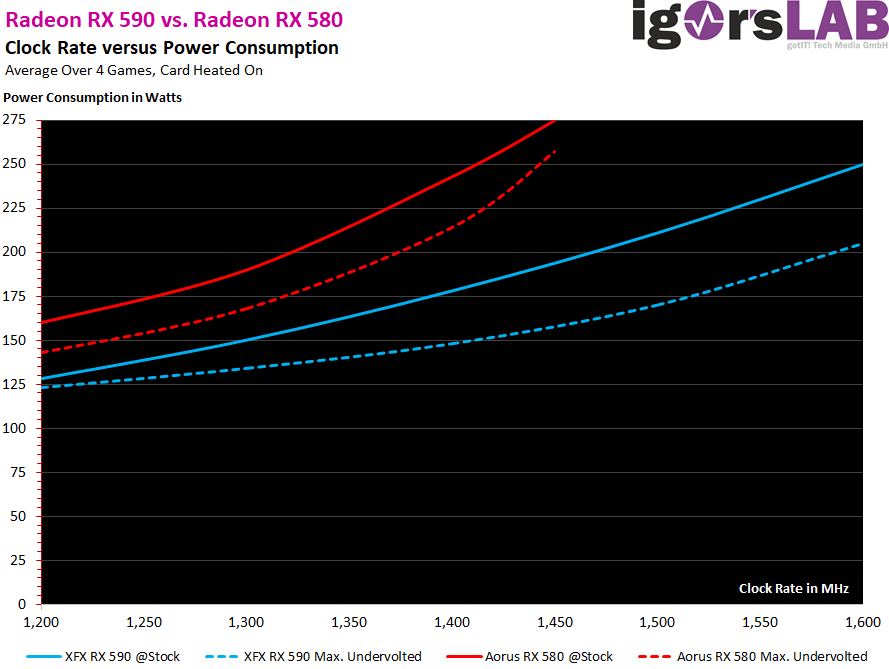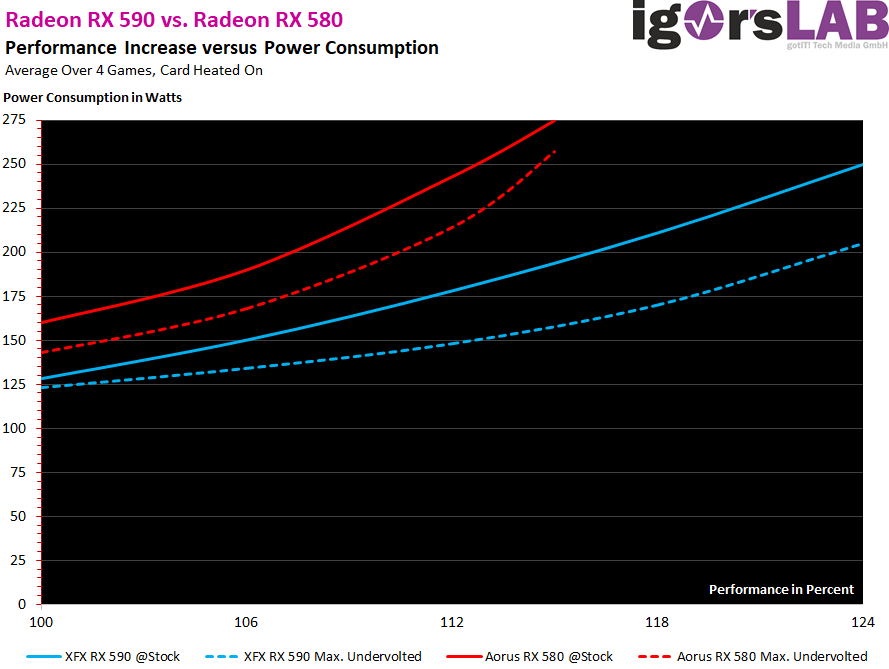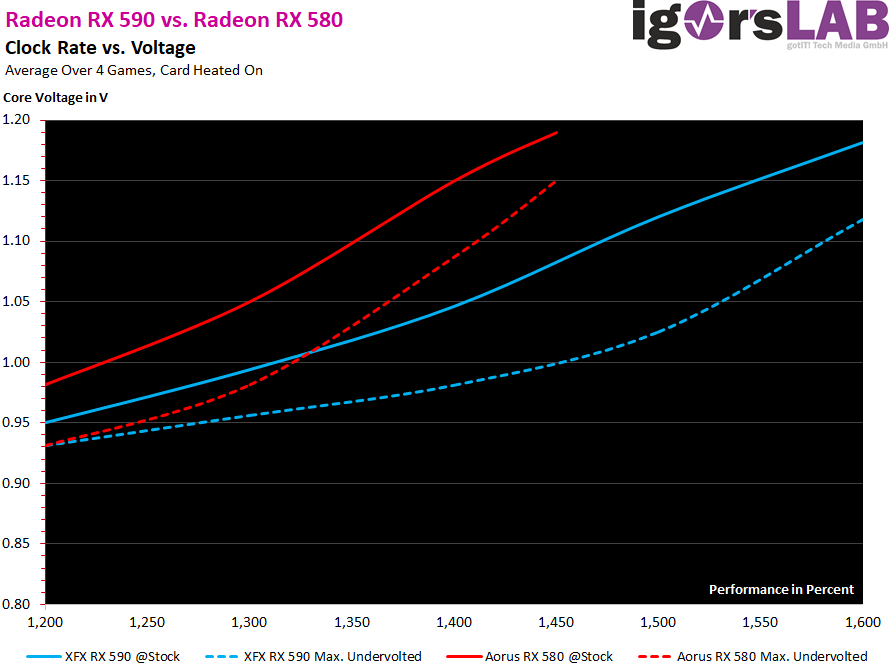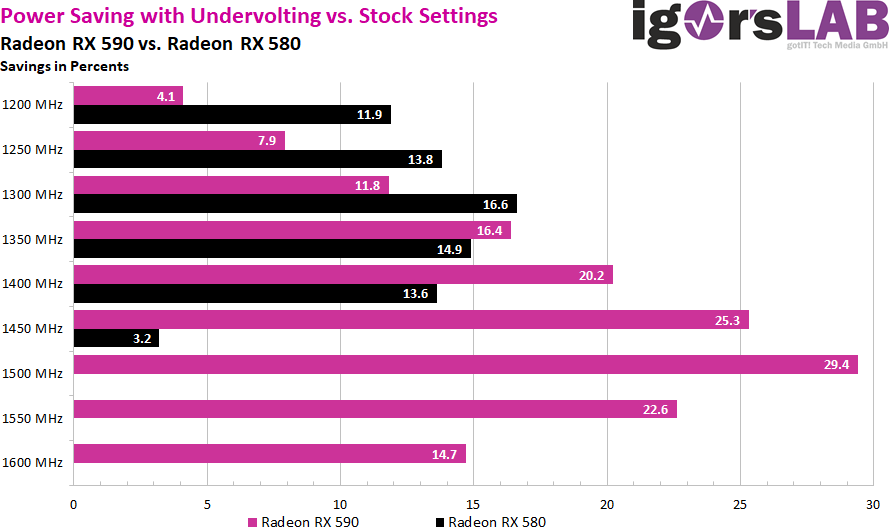Takraten vs. Power Consumption vs. Performance
In the first diagram, I once compared the curves for the clock frequency-related power consumption values for you. The solid curves stand for the default values for both cards, which Wattman provides us with the automatic function and the dashed curves then for what I was able to get out manually by means of subvolts.
Apart from the fact that with both cards "ordinary what's possible", you can see very clearly the improvements from Polaris 30 to Polaris 20! What the RX 590 offers with a safe and still stable undervoltage, can be seen and I will show later in a bar chart at which bar the most savings for the two cards was possible.
But what can impress, I will certainly come back to it several times later, is the much flatter ascent of the curve at the Radeon RX 590 in order to achieve the next clock increase. On the one hand, the curve is much more relaxed and does not have a disproportionate increase towards the end. What is added to the Radeon RX 590 in power consumption "out of line" and thus undermines the linearity of the rise, is likely to be explained for the most part by the leakage currents at rising temperature and the then faster rotating fans

Let's move on to the standardized benchmarkvalues that I set for each card as a 100% mark at 1200 MHz each. This is possible because both the Radeon RX 580 and the Radeon RX 590 also provided completely identical benchmark results at the same time (within possible measurement tolerances)! Feat, because it's almost the same chip in the end. What is fundamentally different, however, is, of course, the required power consumption.
It is really striking to see that the following diagram offers almost coincident curves, because the real achieved performance scales almost linearly to the clock over the entire measuring range! This of course also explains why the chip then becomes much thirstier from a certain limit, but can maintain the required performance. Above all, however, we see two things.
The Radeon RX 580 can be used from approx. 1400 MHz only badly undervoltage, until then at approx. 1450 MHz the clock doesn't want to go any further at all, no matter what the voltage is. Even if the curve of the under-voltage Radeon RX 590 is also clipped from the end of the clock, it is very nice to see that it is no longer due to the voltage! Here the chip encounters simple physical limits that one has to accept. So let's see more at 7nm…

Of course, we are also interested in the respective tensions that were really possible. I also quickly pressed this into a corresponding graphic:

Percentage savings by subvolting
Let's move on to the threatened bar chart. I have once again compared the possible savings by subvolting for both cards at every possible clock level. The percentage evaluation of the performance savings is even more meaningful than the curves already discussed. While the subvolt in the older Radeon RX 580 is approx. 1300 MHz with almost 17% saving is most worthwhile, the highest possible savings of the Radeon RX 590 is approx. 1500 MHz (i.e. 200 MHz higher) and brings almost 30%!
And while with the Radeon RX 580 and the maximum clock only a good 3% were saved by the manual sub-voltage, with the Radeon RX 590 it is still just under 15 watts! These values alone show us very nicely that a lot has happened with Polaris 30 and that you can save enough power by the manual sub-voltage without losing performance at the same time.



































Kommentieren